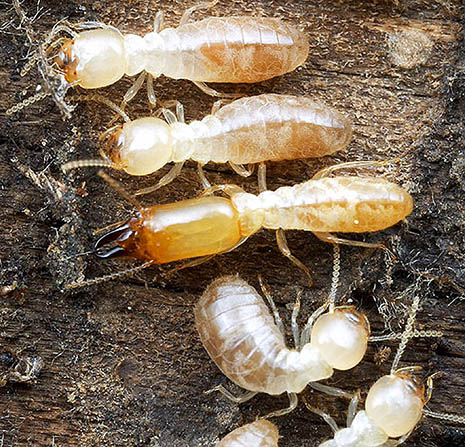Termites have pale brown to white bodies with a darker head and have no waist between the thorax and abdomen. The antennae have bead-like segments. The non-reproductive forms never develop wings, are blind, and have thin skin that makes them vulnerable to drying out. Reproductive forms have two pairs of equal-sized wings, one pair of compound eyes and a thicker skin that protects them better from drying out when exposed.
Nests are formed either in trees, in soil mounds or underground. There are five main nest types and many species will build more than one type of nest:
- Ground mounds
- Tree nests (outside tree, connected to internal cavity)
- Pole nests (on human structures such as fence posts and telegraph poles)
- Subterranean nests (underground, in soil, stumps and tree bases)
- Tree wood (inside the tree)
- Not all termites feed on wood, most feed on grass or other matter, and all are not pests to buildings. Those that do feed on wood will get their cellulose, sugar and starches from the sapwood of trees and timber constructions such as buildings.
Termites undergo an incomplete metamorphosis, with three developmental stages:
- Egg
- Nymph
- Adult
The queen can lay several thousand eggs in a day and the king is only slightly larger than the rest of the colony and will continue to mate with the queen for life. Nests are built in the soil because termites are very dependent on the soil for their moisture.
Termites build their tunnels because they are susceptible to changes in the external environment. They usually work their way above ground to reach the cellulose, this is broken down into starch with the help of protozoan’s in the termite’s gut.

COPTOTERMES ACINACIFORMES
The Coptotermes is the most common and most destructive termite in Australia.

Mastotermes Termites

Schedorhinotermes Termites

Nasutitermes Termites

Heterotermes Termites



 Instagram
Instagram